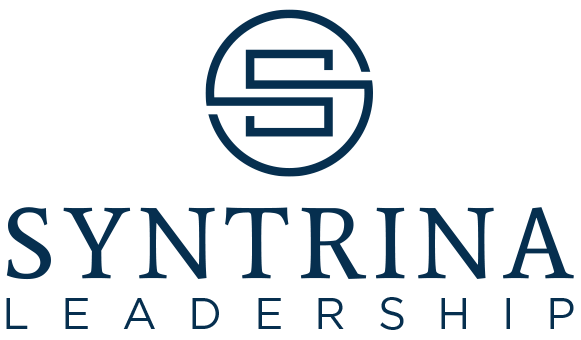Language is a beautiful thing.
It’s far more than just a tool for communicating, but a magic wand that shapes our view of the world and how others perceive us. It’s a vehicle for expressing thoughts, emotions, and values – and it’s at the core of all human connections.
There is a fascinating connection between language and leadership, and how the power of words can shape the course of teams, organizations, our world. Let’s explore.
As leaders, our choice of words can do wonders.
It’s more than just sharing information, it’s a chance to inspire and motivate our teams, fostering a dynamic, positive, and productive work atmosphere. Our words carry weight, instilling trust and confidence. Conversations become chances to influence, connect, settle disputes, and effectively convey our vision.
One concept that beautifully highlights the influence of language on our minds is Neuro-Linguistic Programming (NLP).
In a nutshell, NLP is a set of tools and techniques that allow us to understand how our minds work and how we communicate with others. It provides insights into our patterns of thoughts, feelings, and behaviours and offers strategies to make positive changes in those patterns. The term ‘Neuro’ refers to our brain and nervous system, responsible for our experiences. ‘Linguistic’ pertains to the language we use to communicate, while ‘Programming’ alludes to the possibility of changing and improving our patterns of thinking and behaving.
For example, here are five commonly used NLP tools:
- Rapport: A fundamental tool of NLP, rapport is establishing a relationship of mutual understanding or trust with another person. It often involves matching body language, tone, and tempo of speech to make the other person feel understood and accepted.
- Swish Pattern: This is a visualization technique where the individual is encouraged to ‘swish’ a negative thought, behavior, or feeling into a positive one. It’s like visualizing an internal movie where a bad habit is replaced with a beneficial one.
- Anchoring: Anchoring is about associating a physical stimulus with a particular emotional response. For example, touching your thumb and forefinger together at the moment you feel confident, so that you can trigger that confidence later by repeating the gesture.
- Reframing: Reframing involves changing the way you perceive an event and therefore changing its meaning. For example, seeing a failure as an opportunity for learning.
- Meta Model: The Meta Model is a set of questions designed to reveal the underlying assumptions or limiting beliefs someone has about a problem or situation, helping them to see it in a new light.
NLP is akin to a user manual for our minds, enabling us to use them more effectively.
It’s a powerful resource for leaders who want to harness the power of words to foster a growth mindset within their teams. NLP can be employed effectively in various business scenarios, such as sales and customer communication. By observing a client’s body language, tone of voice, and choice of words, salespersons can gain insights into their preferred communication style and adapt accordingly.
However, the effectiveness of these techniques largely depends on their ethical application and the consideration of individual contexts and well-being. As leaders, our aim should be to understand and positively influence our team members.
Moreover, the way we use language as leaders can also shape the culture of an organization.
Inclusive and respectful language creates a climate that values diversity, encourages collaboration, and promotes innovation. Our words can rally teams behind a shared purpose, leading to exceptional outcomes.
It’s essential to remember that empathy and compassion, reflected through our language, are critical to building strong relationships and understanding the needs of our teams. By using empathetic language, we can provide the necessary support for growth and development.
Leaders who are intentional with their words demonstrate authenticity and integrity, inspiring others to follow their lead. This, in turn, sets the tone for the organizational culture and shapes the future of our teams, our organizations, and our world.
Now, let’s look at the words that influential and visionary leaders throughout history have used to inspire and motivate people:
- Freedom, as Nelson Mandela put it, is “to live in a way that respects and enhances the freedom of others.”
- Equality, according to Gloria Steinem, recognizes “the equality and full humanity of women and men.”
- Change, as per Wangari Maathai, is a call “to shift to a new level of consciousness.”
- Empowerment, in the words of Dolores Huerta, believes “every minute [is] a chance to change the world.”
- Hope, as Helen Keller said, is “the faith that leads to achievement.”
- Courage, according to Aung San Suu Kyi, teaches us “Fear of losing power corrupts those who wield it.”
- Justice, as Bryan Stevenson sees it, is when “the opposite of poverty is justice.”
- Unity, as per Dolores C. Huerta, is when “we come together as a community, working towards shared goals.”
- Empathy, Brené Brown reminds us, communicates the healing message of ‘You’re not alone.’
- Sustainability, Greta Thunberg insists, is about acting “as if the house is on fire because it is.”
These words aren’t just empty phrases. They come from influential leaders who have left a lasting impact on the world. Their words resonate with us because they touch our hearts, inspire us, and remind us of our own potential to create positive change.
Language is a potent tool in leadership.
It holds the key to shaping perception, influencing organizational culture, and inspiring individuals to make our tomorrows better than today.
Putting the abstract into practice, here are ten phrases that exceptional leaders often use to engage, inspire, and motivate their teams. Incorporating these into your regular conversations and meetings can have a profound impact:
- I believe in you. – This simple phrase communicates trust and confidence in your team’s abilities. It inspires them to stretch their capabilities and instills a strong sense of empowerment.
- What are your thoughts? – Inviting input underscores the value you place on team members’ perspectives. It also encourages open dialogue and fosters a collaborative environment.
- How can we improve? – A continuous improvement mindset is vital in a dynamic business environment. Asking this question signals your commitment to learning and growth.
- I understand and appreciate your point of view. – Empathy in leadership is paramount. This phrase conveys respect for others’ opinions, even if they differ from yours.
- Thank you for your efforts. – Recognizing hard work and dedication fosters a culture of gratitude. It helps motivate your team and boost their morale.
- We made a mistake, let’s learn from it. – Owning up to errors and turning them into learning opportunities encourages a culture of transparency and resilience.
- Your well-being matters to me. – This communicates that you value your team members not just for their work, but as individuals. It underscores your commitment to their health and happiness.
- What can I do to support you? – Offering support not only helps address team members’ challenges but also conveys your willingness to be an active participant in problem-solving.
- We’re in this together. – This phrase strengthens team unity and instills a shared sense of purpose. It promotes the idea that collective effort is key to achieving goals.
- Let’s celebrate our successes. – Recognizing achievements big and small fosters a positive work environment. It gives team members a sense of accomplishment and motivates them towards future successes.
Remember, your words carry weight and meaning. The more consciously you use them, the more effectively you can lead, inspire, and drive change.
Let your words reflect your leadership values and vision – let them be a tool to empower and uplift those around you.






